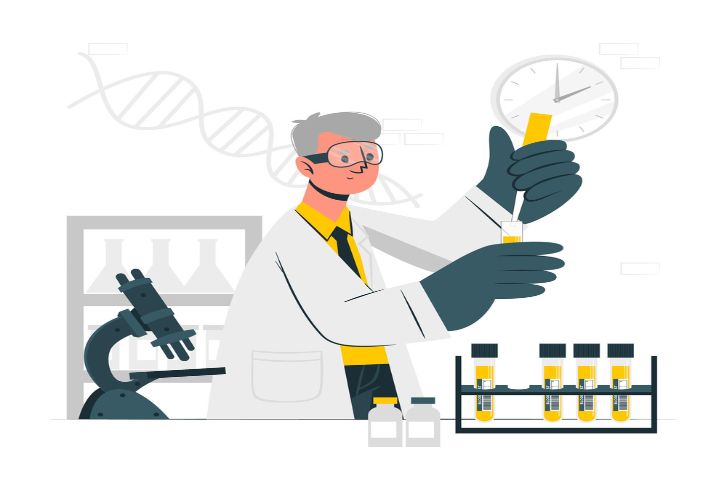
Laboratories are bustling hubs of scientific discovery and innovation, where medical researchers work diligently to advance our understanding of diseases, develop new treatments, and improve patient care. While these spaces hold great promise, they also present inherent risks that can pose a threat to both researchers and the public. Thus, it is paramount for medical researchers to prioritize safety at all times.
In this blog, we will outline essential lab safety guidelines to help ensure the well-being of everyone involved in medical research. Here are the top things that everyone can practice. The same will help you with the points you are looking for and eliminate the issues. You can check each thing in detail and get to know the same as you are looking for. This way you will be able to know about the medical researcher’s safety first.
What are the top practices for lab safety guides for medical researchers?
Below we have added all the details the professional needs to know. Explore them all to know about the same. Every point that we have elaborated on will help you with a clear understanding and provide you with the information you are looking for. Let us explore the mentioned points and get to know how it is helping the professionals.
You may have practiced the same before also. But some of the points you will find new for you and get the ideas for the same. Check them all and get to know how you can improve and prevent the mistakes you may have made before. Check them all and find out the top thing for you to have competitive practices for the medical probationers.
1. Know Your Lab
Before you start working in a laboratory, familiarize yourself with the specific safety protocols, emergency exits, and safety equipment available. Each lab may have unique hazards, so don’t assume that what works in one lab will apply to another.
2. Personal Protective Equipment (PPE)
Always wear the appropriate PPE, including lab coats, gloves, safety goggles, and closed-toe shoes, when working in the lab. PPE serves as your first line of defense against chemical, biological, and physical hazards.
3. Chemical Safety
Chemicals are an integral part of medical research, but they can also be hazardous. Follow these safety measures:
- Label all chemicals accurately.
- Store chemicals according to their compatibility.
- Use fume hoods when working with volatile substances.
- Dispose of chemicals in designated waste containers.
4. Biological Safety
Working with biological materials like bacteria, viruses, and tissues requires extra care:
- Follow proper containment and handling procedures.
- Use biological safety cabinets when handling infectious agents.
- Wash your hands thoroughly after working with biological materials.
5. Equipment Safety
You must be checking everything on a regular basis. This way you will be able to maintain the laboratory and make everything function correctly. If you notice any issues, report them to the lab supervisor or designated personnel.
6. Fire Safety
Know the location of fire extinguishers, emergency showers, eyewash stations, and fire exits. Are you prepared for the fire drills? If you face any emergency. If not you must be prepared for the same and check whether the same will work for you and you can take the situation if it arises.
7. Emergency Procedures
Familiarize yourself with lab-specific emergency procedures, including evacuation plans and contacts for reporting accidents or incidents.
8. Chemical Hygiene
Adhere to chemical hygiene plans in your lab. These plans outline safe practices for chemical handling, storage, and disposal.
9. Electrical Safety
Avoid overloading outlets, use grounded electrical equipment, and keep liquids away from electrical sources to prevent electrical hazards.
10. Training and Education
Participate in lab safety training sessions and stay up-to-date with safety protocols and regulations. Continuous education is crucial to preventing accidents.
11. Chemical Spills
Know how to respond to chemical spills. Report spills immediately, and use appropriate spill kits to contain and clean up the spill safely.
12. Waste Disposal
Dispose of laboratory waste according to local regulations and lab policies. Never dispose of hazardous materials in regular trash bins.
13. Collaboration and Communication
Effective communication among lab members is vital. Share safety concerns, incidents, and lessons learned to improve overall safety in the lab.
14. Proper Documentation
Maintain detailed records of experiments, procedures, and safety protocols. Good documentation can aid in identifying and preventing safety issues.
15. Regular Risk Assessments
Perform risk assessments before starting experiments to identify potential hazards and implement appropriate safety measures.
These are the practices you can follow. The same will help you with the idea and prevent you from mishappening. Must consider them all to have safety first for you.
Conclusion
Lab safety is non-negotiable for medical researchers. By adhering to these guidelines and promoting a culture of safety, researchers can protect themselves, their colleagues, and the integrity of their research. Remember, safety should always be a top priority in the quest for scientific knowledge and medical advancements. If you like this story and have any feedback. Please share your feedback in the command section. We can also help you with the details and more such content to be provided to you. Please, share your feedback and you can ask for the things that you are looking for.







